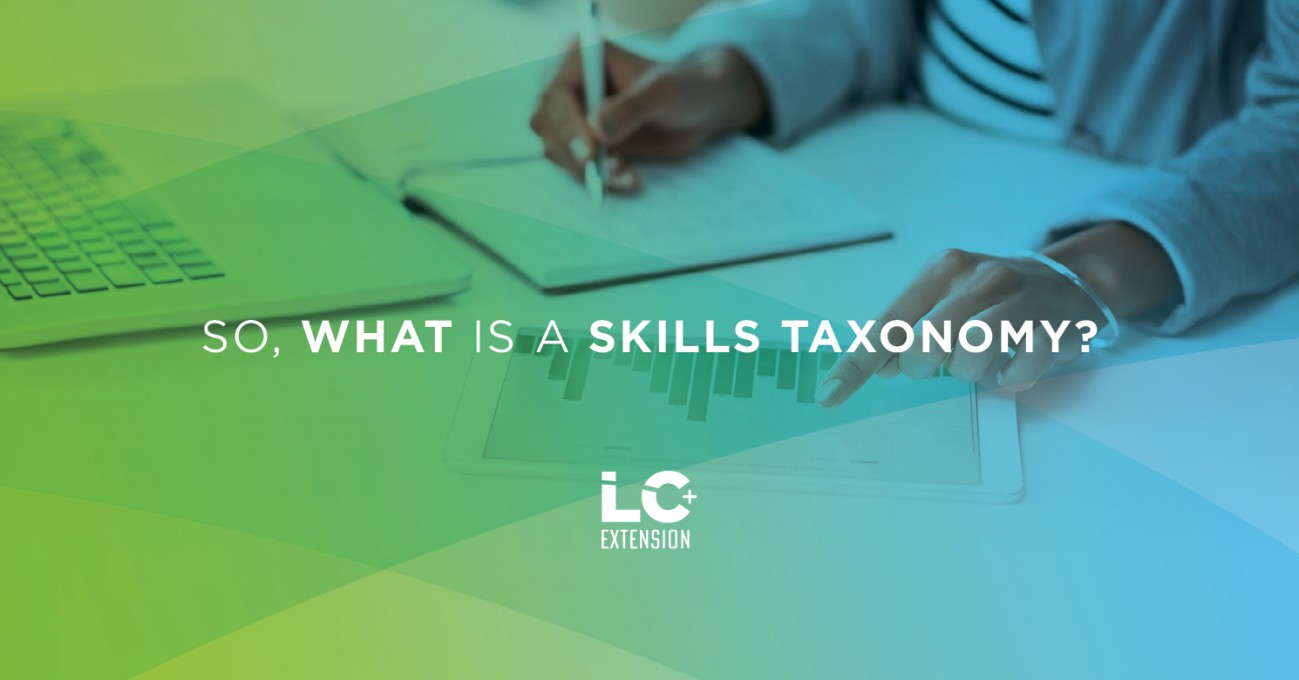
So, what is a skills taxonomy?
Skills have always been important. Work, quite literally, cannot get done without them. But it wasn’t until now in an overwhelmingly digital business landscape that companies had the data, systems and tools to quantify skills.
Highly skilled people have the power to transform companies and accelerate them towards success — but employers can’t access that potential unless they know who their most skilled people actually are. Forging the path to this knowledge involves gathering skill data, a crucial part of which is the skills taxonomy, or framework.
A quantified world
Today, a data-based understanding of skills is within reach. Many enterprise-level companies use human capital management software that collects an unprecedented amount of information on their people, most of which has some level of skill-capturing capabilities.
The goal, as analyst Josh Bersin brilliantly explains, is to move from a role-based understanding of work and employees, where we only know people by their job titles, to a skill-based one.
This provides a much more holistic view into what organizations need, and what people can do. It can help HR managers fill important roles from within the company, or see if they already have the skills available in-house, just by reallocating other employees’ time.
Skill data is also especially important as work and in-demand skills change so quickly, thanks to digitization. To stay current, employers need to engage in upskilling, reskilling and skills assessment on an ongoing basis. This more flexible, agile way of working isn’t optional — it’s required to keep up with digital transformation.
Skills organized by impact
That’s a basic introduction to skill data — but what exactly is a skills taxonomy?
A taxonomy is a way to organize information. A skills taxonomy is a system to identify, name and organize the critical skills your company needs to get work done.
The skills in your taxonomy will be categorized into groups and clusters, typically by role or by the business goal they serve. A taxonomy can also contain personas for the team members needed to handle important work, and what skills they should have.
This is different from a skill inventory, which is a complete list of all the skills everyone in an organization has. Rather, a skills taxonomy will help you understand where your most skilled people are, without a confusing level of detail. For example, everyone in your company might need to use tools like Slack or Microsoft Teams, but that doesn’t make those skills (which are important, but commonplace) most critical for business success.
A skills taxonomy also helps you ensure that everyone in your company is using a common language to talk about skills. For skill data to be valuable, it needs to be standardized — if you’re using different terms in different places to refer to the same skill (like “collaboration” versus “working with others”), you’re not getting the comprehensive picture you need.
When constructing a skills taxonomy, it’s not your goal to capture everything. Instead, you’ll single out the skills that matter most to your unique positioning and industry. Are you focused on product innovation, thus needing highly technical skills, or do you excel at customer experience, placing more emphasis on support and communications?
Skill data for future-proofing
Rapid change isn’t going away. Technology advances so quickly, and itself defines the way we work. That means our work and goals, and the skills we need to achieve them, are going to keep evolving.
To keep up, an intuitive understanding of our people’s skills simply won’t be sufficient. We need hard data on what employees can do — not just to drive profits, but to help people reach their full potential.